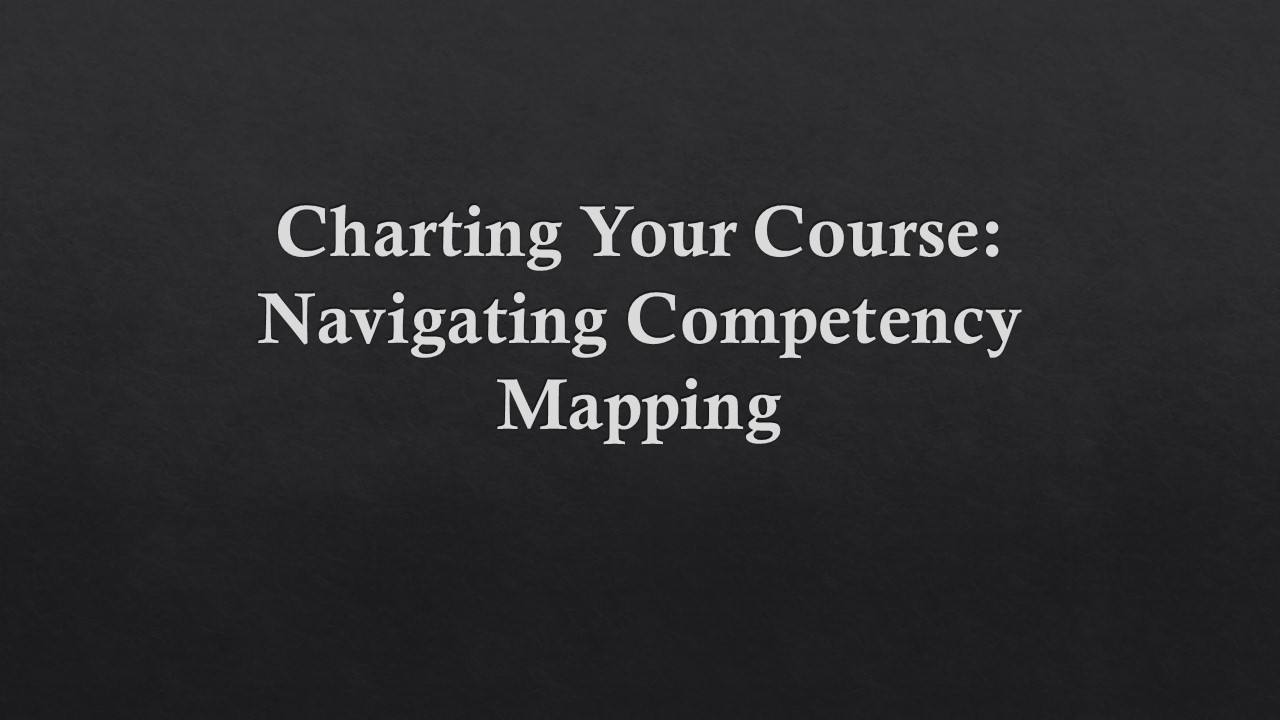competency mapping (2) - PowerPoint PPT Presentation
Title:
competency mapping (2)
Description:
Competency mapping is a strategic process that involves identifying and assessing the skills, knowledge, abilities, and behaviors required for individuals to effectively perform their roles within an organization. It serves as a framework to align the organization's objectives with the skills of its employees, ensuring that there is a clear match between what the job demands and what the employees bring to the table. – PowerPoint PPT presentation
Number of Views:11
Title: competency mapping (2)
1
Charting Your Course Navigating Competency
Mapping
2
What is Competency Mapping?
- Competency mapping is a process that involves
identifying and defining the skills, knowledge,
and abilities required for employees to perform
their jobs effectively. It helps organizations to
better understand the strengths and weaknesses of
their workforce, and to align their human
resources strategies with their business goals. - In today's fast-paced and constantly evolving
workplace, competency mapping has become
increasingly important. With the rise of new
technologies and changing customer expectations,
organizations need to be able to quickly adapt to
new challenges and opportunities. Competency
mapping provides a framework for developing and
nurturing the skills and competencies that are
critical for success in today's business
environment.
3
The Benefits of Competency Mapping
- Competency mapping offers numerous benefits for
both employees and employers. For employees, it
provides a clear understanding of the skills and
knowledge required to succeed in their roles,
allowing them to identify areas for improvement
and take steps to develop their careers. This can
lead to increased job satisfaction and
motivation, as well as improved performance and
productivity. - For employers, competency mapping enables them to
identify skill gaps within their workforce and
develop targeted training programs to address
these gaps. This can result in a more skilled and
efficient workforce, which can improve overall
business performance and competitiveness.
Additionally, competency mapping can help
organizations to identify high-potential
employees and provide them with opportunities for
career development and advancement.
4
The Process of Competency Mapping
- Competency mapping involves identifying the key
skills, behaviours, and knowledge required for
success in a particular job or role. This process
begins with a job analysis, which involves
collecting information about the tasks,
responsibilities, and requirements of the job.
Once this information has been gathered, the
competencies required for success can be
identified. - The next step in the process is to assess the
current level of competency among employees. This
can be done through various methods such as
self-assessment, peer assessment, and manager
assessment. The results of the assessments can
then be used to identify gaps between the
required competencies and the current
competencies of employees. Finally, a development
plan can be created to bridge these gaps and
improve employee performance.
5
Competency Mapping Tools and Techniques
- Competency mapping is a process of identifying
and assessing the skills, knowledge, and
abilities required for successful job
performance. - Various tools and techniques are used in
competency mapping, including interviews,
surveys, and assessment centers. These methods
help to identify the specific competencies that
are required for each job role and provide a
basis for evaluating employee performance.
6
Common Challenges in Competency Mapping
- One of the most common challenges faced in
competency mapping is resistance from employees.
Some employees may feel that their competencies
are being undervalued or that they are being
judged unfairly. It is important to communicate
the benefits of competency mapping to employees
and involve them in the process as much as
possible. This will help to build trust and
ensure that everyone is on board with the
initiative. - Another challenge is selecting the right
competencies to map. It can be difficult to
determine which competencies are most relevant to
the organization and its goals. To overcome this
challenge, it is important to involve key
stakeholders in the process and use data-driven
methods to identify the competencies that are
most critical for success.
7
Implementing Competency Mapping in Your
Organization
- To successfully implement competency mapping in
your organization, it is important to first
identify the key competencies required for each
role. This can be done through job analysis and
consultation with employees and managers. - Once the competencies have been identified, it is
important to develop a competency framework that
outlines the knowledge, skills, and behaviours
required for each level of proficiency. This
framework should be communicated clearly to all
employees and used as a basis for performance
management, training, and development programs. - Reference
- Role of technology-induced training towards
efficient competency building - Unlocking Success with Competency Mapping A Deep
Dive into EasySIM Innovative Platform

